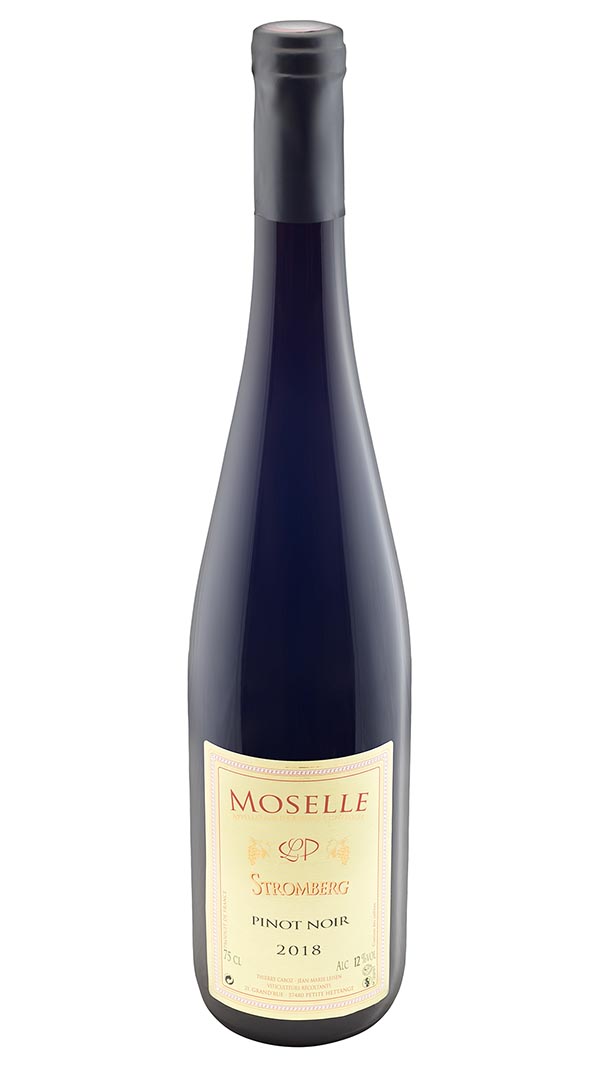Domaine du Stromberg



Jean-Marie Leisen
Four generations of alcohol producers
History of the Estate
How was your Estate founded? Who founded it? What motivated you?
Jean-Marie Leisen - Our Estate has been around for generations! My parents and grandparents already worked here as distillers and wine producers. My grandmother came from Contz-les-Bains and was a wine producer’s daughter.
The Estate is also very linked to the history of the region. From 1920 to 1960, the steel industry was booming, and people used to drink a fair bit of alcohol to summon up the courage to go down the mines, mainly beer and what they called a “beer chaser” (beer with grain alcohol).
My grandparents ran the business from 1920 to 1955, then my father Albert and mother Alice from 1955 until 1984, when I took over the running the Estate. My father continued working with me until 2006.
I currently have an associate called Thierry Caboz, with whom I developed the Domaine du Stromberg. My daughter Sarah has also worked on the Estate for the past 3-4 years and my wife has always been by my side.
What training do you have?
JML - I was trained by my family and completed this training with a course in oenology in 1985 - 1986. My grandfather used to tell me to stick my finger in the vat to try it and guess which fruit it was. It really helped develop my sense of taste!
I look after the vineyards and the orchards, distilling and vinification, but I am also director and educator of a child protection association in Fameck for children and teenagers. I also played a very active part in obtaining PDO status for our Moselle wines. I set up viticulture training courses in the vines and cellars, as well as cellar monitoring with oenologists.
Wine tourism services
What wine tourism services do you provide on the Estate?
NP – Last year, we organised a barbecue in the vines to bring people back together after the lockdown and to sell some wine. We went on a circular trail in the vines and then came back down to taste the wine. I also have a partnership with the gite des Coquelicots in Marieulles.
Projects
What future plans do you have for your Estate?
JML - We are planning for Sarah to take over the business and want to increase the vine growing area. We would also like to extend the distillery, the shop and put a cellar next to it which we could use as a tasting room and reception area. Personally, I would also like to extend our range of whiskies.
Current situation
What is your Estate’s surface area and geographic situation?
JML - We have 20 acres of vines (which we aim to increase) that are in Contz-les-Bains, Haute-Kontz, and Sierck-les-Bains. We are situated on the Lorraine plateau, where each slope develops its own distinctive aroma according to its geology.
Could you tell us about your production? What sort of products do you sell on the Estate? How much do you produce, how many bottles?
JML - We produce approximately 30,000 bottles a year. We sell a variety of products, such as wine, of course, but also liqueurs, fruit schnapps, whisky, gin, mirabelle, apple, pear etc. We have the following varieties of wines: auxerrois, muller thurgau, pinot gris, pinot noir, pinot blanc and gewurztraminer.
Our first PDO vintage was developed in 2011.
How would you describe the three wines you have selected?
JML - The first is a muller thurgau, which should not be kept very long. It is a very fruity, floral wine with muscat aromas and a developed nose that does not have a high alcohol content. It was matured in barrels made of wood from Moselle, from my father’s forests, and is ideal for pre-dinner drinks, but also for fish dishes and cold meats.
The second is “Feuilles d’automne” named after a poem by Victor Hugo, who is said to have slept a short distance from our vineyards. It is a blend of auxerrois, pinot gris, muller thurgau and gewurztraminer. It is a well-rounded, smooth, fruity, and floral wine, which is more of a gastronomic wine with a pleasant complexity. This white wine even goes well with red meats. It is my favourite!
The third one is a 100% pinot noir red wine, which was matured in oak barrels for 18 months. This gives it a vanilla taste. It has a very expressive sour cherry aspect and is a good wine for red meat dishes served with sauces.
Estate fundation: 1984
Planting of the vines: Contz-les-Bains, Haute-Kontz et Sierck-les-Bains.
Surface: 8 ha
Production: 30 000 btls/year.
Grape varieties: Auxerrois, Müller-Thurgau, Pinots Gris, Noir and Blanc, Gewurztraminer.
Land: -
Other activities : -
Certification : -


Domaine du Stromberg - Muller Thurgau
A very fruity, floral wine with muscat aromas and a developed nose that does not have a high alcohol content. It was matured in barrels made of wood from Moselle, from my father’s forests, and is ideal for pre-dinner drinks, but also for fish dishes and cold meats.


Domaine du Stromberg - Feuilles d'Automne
Named after a poem by Victor Hugo, who is said to have slept a short distance from our vineyards. It is a blend of auxerrois, pinot gris, muller thurgau and gewurztraminer. It is a well-rounded, smooth, fruity, and floral wine, which is more of a gastronomic wine with a pleasant complexity. This white wine even goes well with red meats. It is my favourite!


Domaine du Stromberg - Pinot Noir
Matured in oak barrels for 18 months. This gives it a vanilla taste. It has a very expressive sour cherry aspect and is a good wine for red meat dishes served with sauces.





































